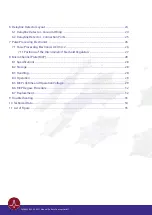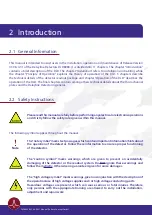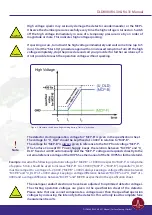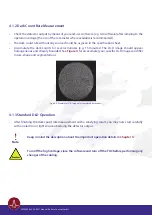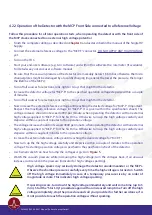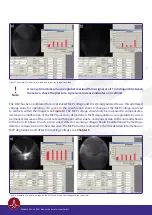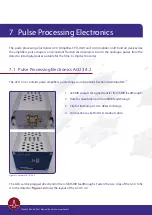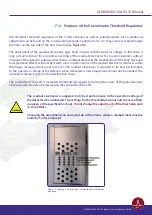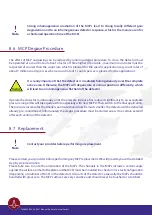
18
• Check the detector output with your end-user software (e.g. GUI software) after ramping to the
operation voltage (the use of the rate meter is recommended).
• Now you may start carefully with an electron source observing the detector output.
Keep in mind the description about the important operation details in
Note
Turn off the high voltage, close the software and turn off the TDC before performing any
changes of the cabling.
4.3 Bake Out Procedure
It is strongly advised to read the following sections completely and to strictly follow all
given advices within it, before baking out the detector.
Note
The maximum allowed temperature for the detector is 150°C. Do not exceed this
temperature.
• The detector electronics (ACU) must be removed before any bake out as well as any HV cabling and
SHV termination plugs.
• Windows and feedthroughs should be wrapped with aluminum foil, to protect them from rapid
temperature changes.
• The use of heating tapes and jackets is not recommended, due to danger of local overheating.
• Do not remove the blankets until the entire system has thoroughly cooled off.
• Do not operate the detector before the temperature has returned to ambient conditions.
After a bake out, the detector needs at least one day to cool down. If channel plates are
operated at higher temperatures (> 70°C) they can suffer damage. Such channel plates
will lose gain and exhibit a markedly higher detector plateau.
Even if the detector housing feels just warm, any internal parts seated on insulators
(e.g. the meander detector) may still be too hot for safe operation. It is imperative that
all users be informed of this issue and take the necessary precaution to ensure proper
device operation.
DLD8080 R4.30 & R4.31 Manual | Surface Concept GmbH

